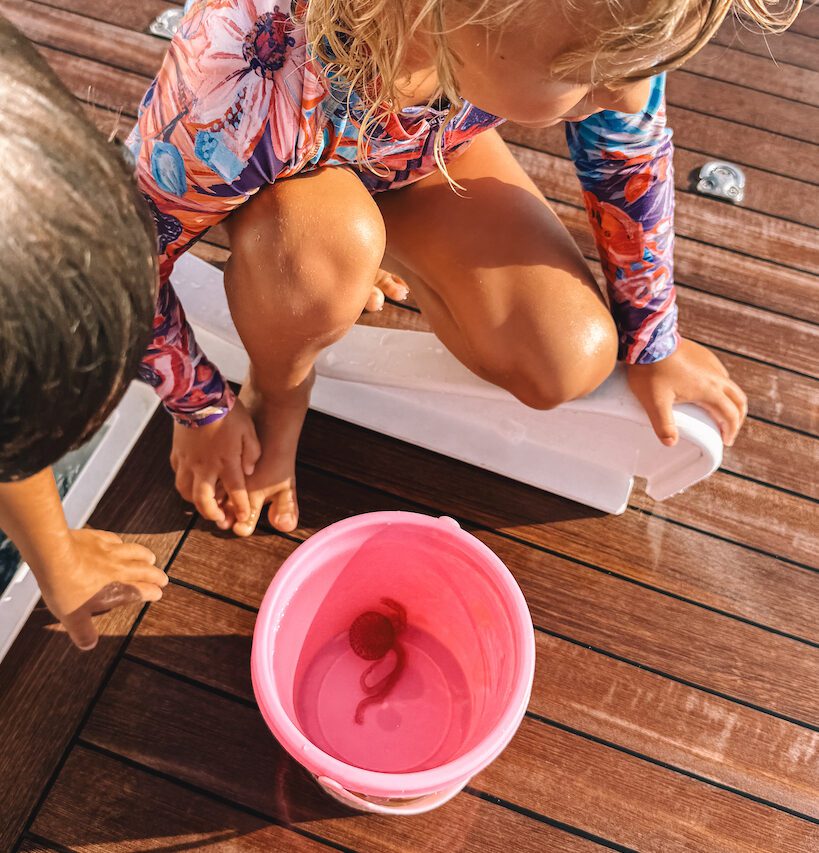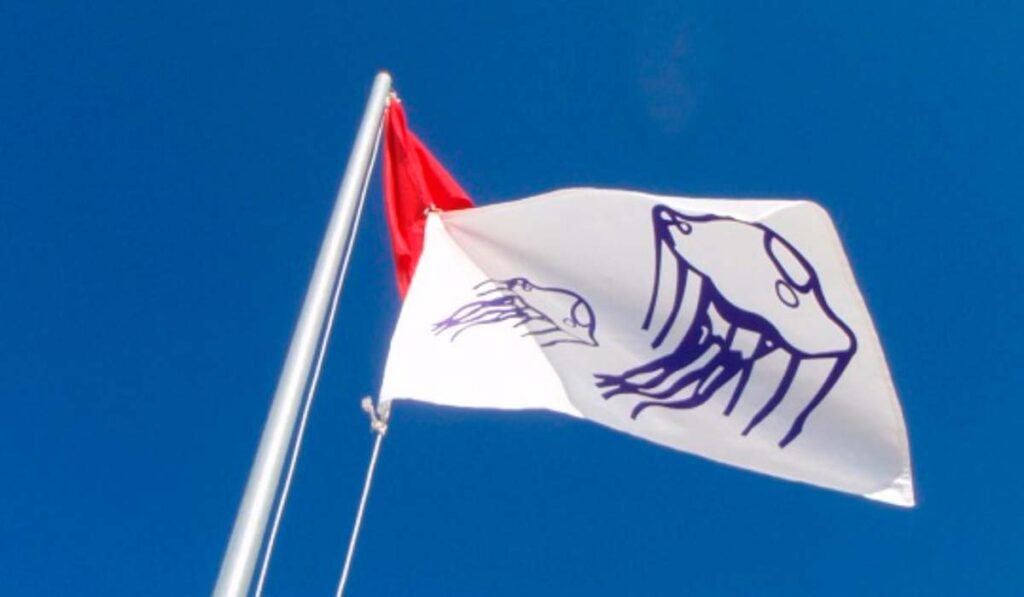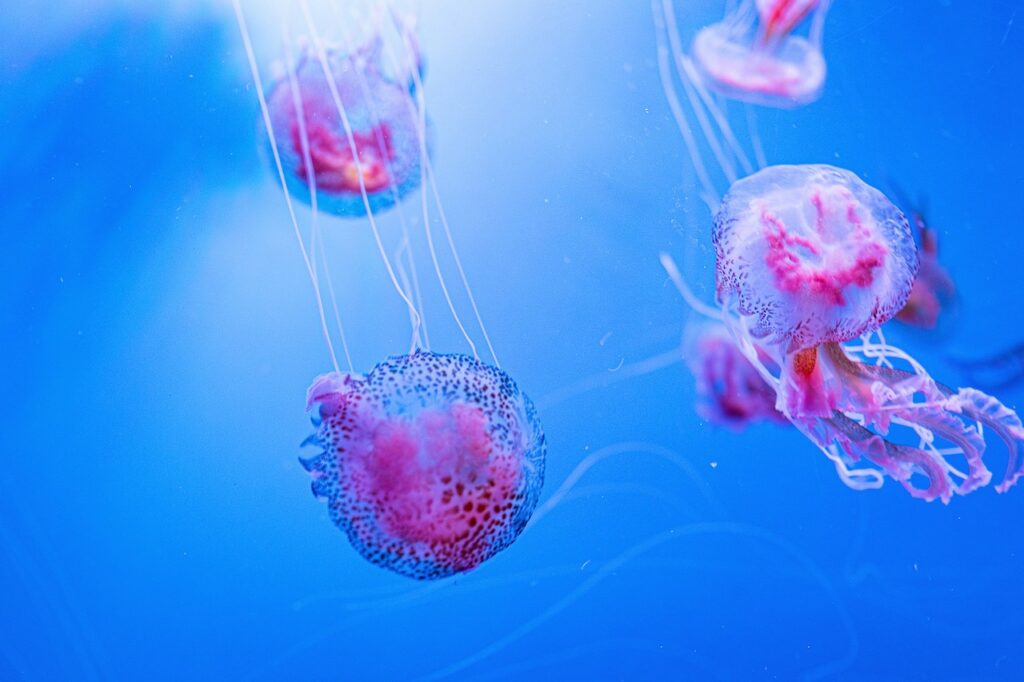Did you know that there are approximately 300 species of jellyfish in the Mediterranean Sea! Fortunately, only around eight make regular appearances in the Balearics (often washed up after stormy seas), with most jellyfish stings on our coasts due to one species in particular, the ‘Pelagia Noctiluca’ or purple jellyfish.

This purple jellyfish – its name derived from Greek for ‘Sea Night Light’ (it glows in the dark!) grows to approx. 6-10cm in diameter but its tentacles can reach a whopping 10metres are are almost invisible water. It can deliver a painful sting but is not usually dangerous (reactions however can be diverse and warning signs, see below, must always be treated seriously.
What to do (and not do!) if stung by a jellyfish
1️⃣ Get out of the water, use the edge of a credit card (unless you have tweezers on hand) to remove any tentacles still attached to the skin. Do NOT scratch or rub the wound with your hands.
2️⃣ Wash the wound with sea water. Do NOT use fresh water (no showers!), you may trigger stingers still attached to the skin
3️⃣ To relieve pain, apply a well sealed ice-pack for 10-15 mins (do NOT apply ammonia, urine or alcohol! And do NOT use ice). Suitable over-the-counter pain relief can be used. Check with the lifeguard for solutions on hand (vinegar and baking soda are both reported as helpful pain-relief but with mixed advisory)
🚨If experiencing any warning signs such as nausea, vomiting, dizziness, muscle cramps, headache, generalised reactions or un-wellness, go directly to a hospital or call 112. If possible identify the type of jellyfish and advise the doctor.

🗣️ Tell the kids
- ☠️ Do not touch dead jellyfish, OR fragments of them, their venom lasts up to 24 hours even in dry conditions.
- 🚨 Look out for the ‘Bandera de Medusa’ (Jellyfish flag). If flying, jellyfish have been reported on the beach.
- 🛟 Notify the lifeguard if you spot a jellyfish or are stung.
Climate change, water pollution and overfishing of natural jellyfish predators (incl. sea turtles) are understood to be core factors causing the multiplication of jellyfish populations worldwide, and likely contributing to the arrival of previously unreported species in local waters.
Download an informative brochure from GOIB (Govern de les Illes Baleares) to identify other common jellyfish, and follow our #FamilyFriendlyBeachGuideMallorca for more info and inspo to enjoy the island’s beautiful beaches all year round.



